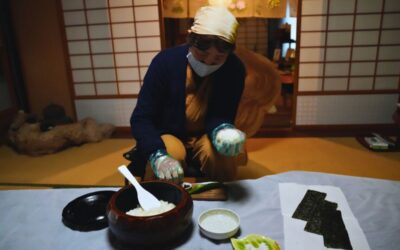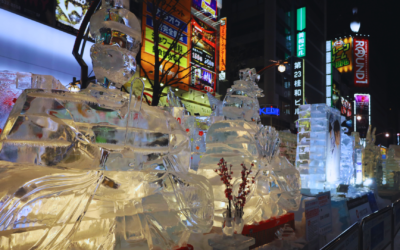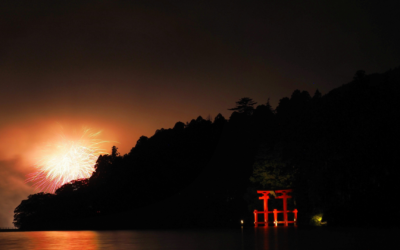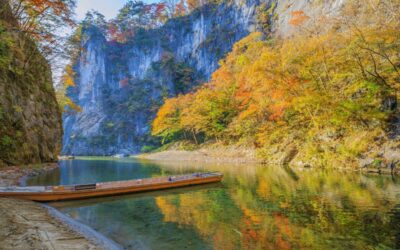Have you heard about Sumida Ward? It’s one of the 23 wards of Tokyo, featuring various unique neighbourhoods and areas, each offering different attractions and experiences. If you’re curious about Sumida ward, including its different areas, top things to do, history, accommodation options, and more, check out this comprehensive guide to Sumida Ward.
A Quick Primer to Sumida Ward

Before the construction of Tokyo Sky Tree, now a world-famous tourist attraction, Sumida was a suburb across the river from Asakusa, known as a sightseeing spot behind the “Tamanoi,” a private brothel that existed from prewar times until 1958. It was regarded as a “backstreet tourist spot,” merely a local downtown area that didn’t welcome strangers.
In the prewar period, craftsmen and factories relocated across the Sumida River from the overcrowded Asakusa, settling in this downtown area.
Most of the area lies along the river, at zero meters above sea level. It’s adorned with old-fashioned wooden houses and Showa-era apartment complexes, maintaining the downtown vibe through generations. However, the town’s ambiance is gradually shifting as it draw celebrities into tower apartments constructed around Hikifune following the completion of Sky Tree.
Living in Sumida Ward

Sumida Ward has now become a prime tourist spot, thanks to the towering Sky Tree, but it was originally a neighbourhood where traditional downtown folks kept to themselves. Interestingly, there’s even a bakery known for despising tourists, getting pretty riled up if they dare snap a photo.

The Kinshicho area boasts big shopping centres like Arca-Kit and Olinas, popular hangouts for families today, but other parts are a bit behind the times, with a demographic similar to neighbouring wards such as Taito, Edogawa, and Katsushika, with a significant elderly and welfare-dependent population.
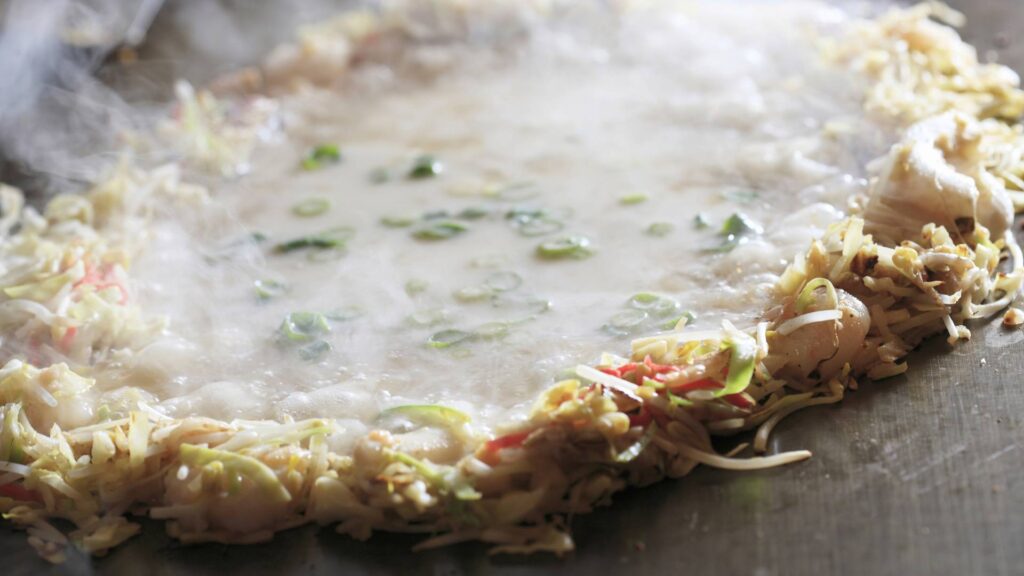
Another notable aspect of Sumida Ward is the abundance of Showa-era eateries dishing out mouth-watering “snack monja,” not catering to touristy prices but rather serving the locals. The real monjayaki experience isn’t in Tsukishima but right here in Sumida. The city’s shopping streets cater more to the elderly, closing unusually early, probably because it’s more of a place for craftsmen in overalls than suited businessmen.
History of Sumida Ward

Sumida Ward was established on March 15, 1947, by merging Mukojima-ku in the north and Honjo-ku in the south into one ward. At that time, the new ward was named “Sumida-ku”. The name “Sumida-ku” was derived from two Chinese characters: “sumi” for the Sumida River embankment, a beloved landmark steeped in ancient history, and “ta” for the Sumida River itself.
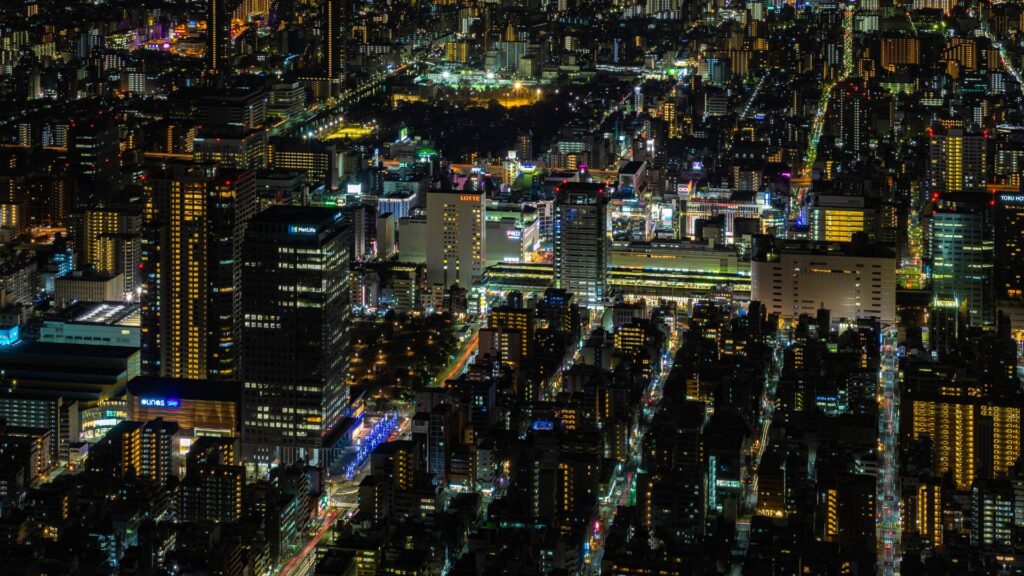
Geographically, it occupies part of the Koto Delta in the eastern section of Tokyo. To the west, it shares borders with Chuo, Taito, and Arakawa wards across the Sumida River; to the north and east, it borders Adachi, Katsushika, and Edogawa wards along the former Ayase, Arakawa, and Nakagawa Rivers; and to the east and south, it borders Kitajuma, Yokojuma, and Tate Rivers, with part of the land extending into Koto Ward.
Around 6,000 B.C., during the dawn of human history, Sumida was still submerged beneath the sea. Over time, an inlet formed in the northern part of Tokyo Bay, and land emerged as sediment deposited by rivers, including those flowing from the Chichibu Mountain Range, the Mikuni Mountain Range, and the Nikko Mountain Range, settled at their mouths. This laid the foundation for Sumida Ward.

In the 12th century, the Kasai and Edo clans, followers of the Minamoto clan, governed the Mukojima area. Later, the region saw conflict, but during the 16th century when the Hojo clan of Odawara rose to power, it was developed as a fiefdom for their vassals, evolving into a farming area.
The development of the southern part of the marshy area was catalysed by the Furisode Fire of Meireki 3 (1657). Edo was nearly razed, and over 100,000 perished. The shogunate buried the victims in the southern Ushijima area and established a kaigo-in temple. In 1659, they erected Ryogoku Bridge across the Sumida River and implemented firebreaks throughout the city.

In line with this fire prevention strategy, samurai residences were relocated to what is now Honjo, in the southern part of Sumida Ward. The Honjo Magistrate and other officials opened the Tategawa River, the Oyokogawa River, and the Nanboku Wari Sewer, cleared the area, and consequently, it became a city primarily consisting of samurai residences, becoming part of Edo. In 1702, the Ako Ronin stormed the Kira residence, avenging their lord’s death and creating a sensation.
Meanwhile, the northern part of the city remained agricultural, continuing to supply food to the citizens of Edo.
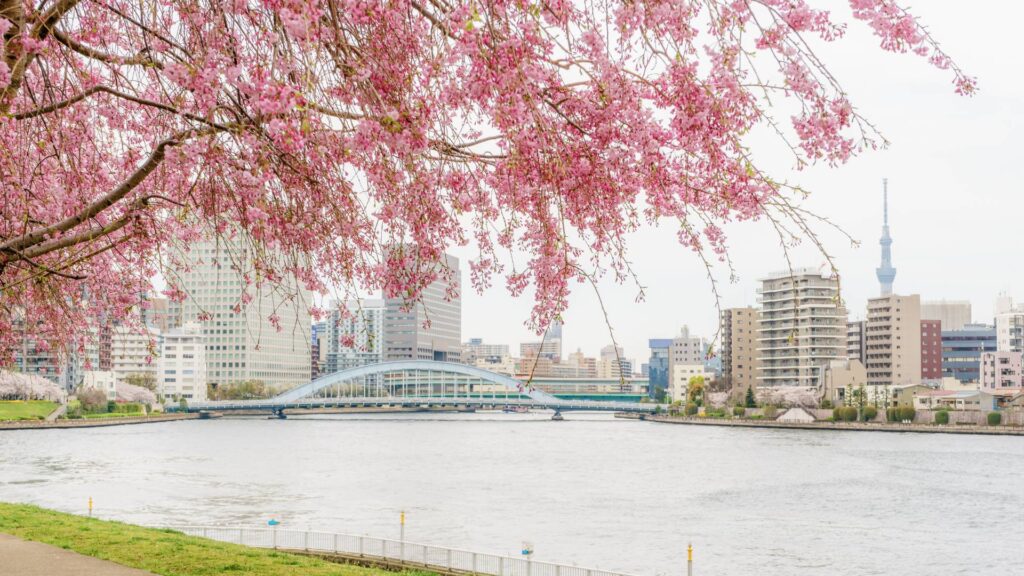
Sumizutsumi’s cherry blossoms, Sumida River fireworks, and sumo wrestling in Ryogoku, still popular nationwide, originated during this era. Despite facing floods, including Edo’s three major floods, Sumida thrived during the Bunka-Bunsei period (1818-1830), becoming a favoured retreat and hosting kabuki and rakugo (comic monologue) performances.
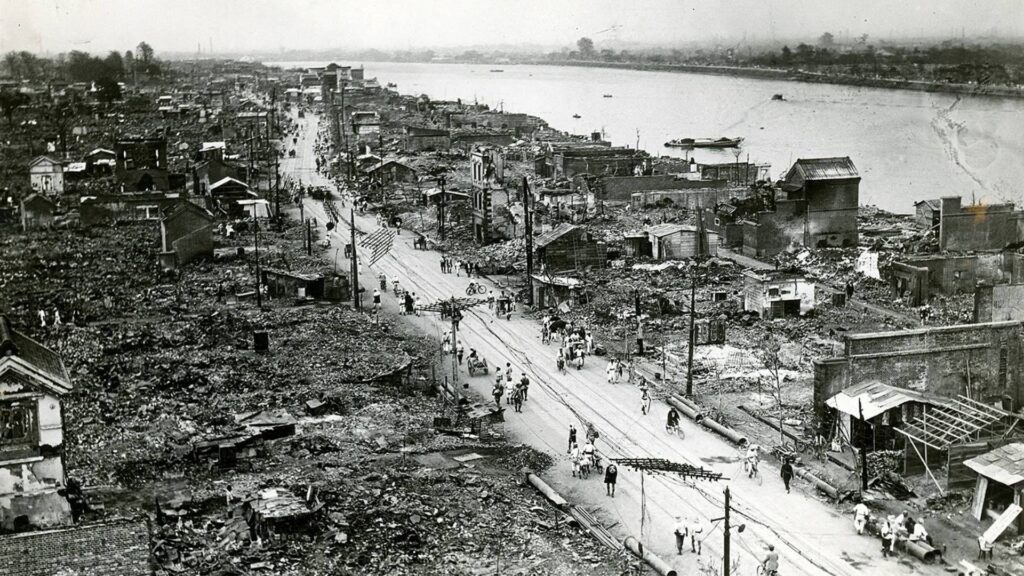
During the Meiji period (1868-1912), marking Japan’s modernization, Sumida assumed a new role as part of the emerging capital city of Tokyo. In 1878, the southern part became Honjo Ward, while the northern part was included in Minamikatsushika County. At that time, daily essentials such as roof tiles, hair accessories, and candles were crafted in the south, while the north focused on agriculture.
However, owing to its strategic riverine location and labour availability, the area gradually transformed into an industrial hub. In the Taisho period (1912-1926), toy manufacturing and the rubber industry for exportation flourished. Meanwhile, in terms of transportation, the current Sobu Line was introduced in 1894, marking the start of an expanding transportation network.

Unfortunately, the Great Kanto Earthquake of 1923 devastated over 90% of the Honjo area, claiming 48,000 lives, over 80% of Tokyo’s total population. In 1932, Mukojima Ward was established in the northern region where reconstruction and urbanization had advanced. Nonetheless, 70% of Sumida was once again reduced to rubble during World War II, resulting in 63,000 casualties and affecting nearly 300,000 individuals.
Areas in Sumida Ward
Along the JR Sobu Line and Toei Shinjuku Line
Kinshicho 錦糸町

This is the heart of Sumida Ward, where Chiba locals can ease into Tokyo’s bustling vibe. Lately, trendy stores have been popping up, thanks to the Hanzomon Line opening up direct routes to Shibuya. Yet, Derby Street and Hanadan-gai at the south exit still maintain a bit of an underground feel.
Ryogoku 両国
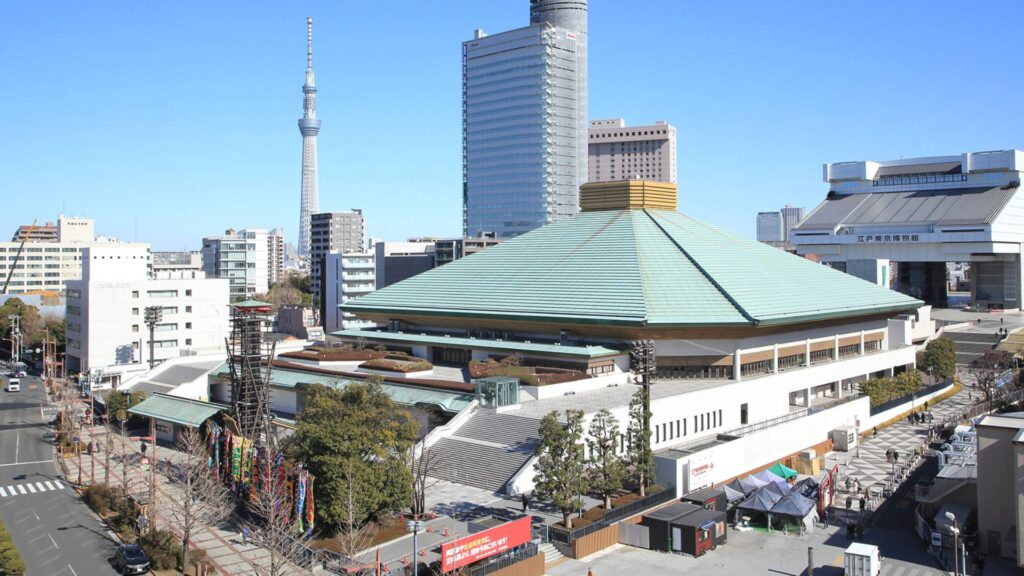
It’s the realm of sumo wrestlers, facing the Sumida River. The Ryogoku Kokugikan is a notable spot. As the first stop on the Sobu Line, the station’s building exudes historical charm. Yokoamicho Park’s Tokyo Metropolitan Cenotaph, honouring the Great Kanto Earthquake and Tokyo Air Raid victims, alongside the vibrant Edo Tokyo Museum, leave a lasting impression.
Kikugawa 菊川

This slice of Sumida Ward is the lone stretch along the Toei Shinjuku Line. The station area may not stand out much, but it’s close to Morishita 3-chome and the business hotel hub of the former Takahashi Doya-gai.
Along the Toei Asakusa Line and Keisei Oshiage Line
Honjo Azuma-bashi Bridge 本所吾妻橋

Crossing the Azuma-bashi Bridge to Asakusa reveals the towering Asahi Breweries building, affectionately dubbed the “poop building” by foreigners for its unique shape. The Sumida Ward Office nearby makes it an administrative hub. This route between Asakusa and Sky Tree sees a surge in tourist-centric stores.
Oshiage 押上

Its downtown vibe is unmistakable. While Skytree’s construction erased the austere Showa shopping street, you can still appreciate the contrast between the area’s wooden structures and the towering Skytree.
Hikifune 曳舟

The stretch between Tobu Isezaki Line and Keisei Oshiage Line stations has seen redevelopment, owing to its proximity to Sky Tree. Luxury townhouses have sprung up, though they’re actually UR rental housing. Hop off at this station to explore Mukojima Hanamachi, once a postwar red-light district, and Kyojima, retaining prewar downtown charm.
Keisei Yahiro 京成八広

“Yahiro” takes its name from “eight,” symbolising the end of a lengthy road. This station is closest to the oil and fat industrial area, housing one of Japan’s premier pig leather tanneries. Factories with blue tin roofs and smokestacks, a Korean school, and a monument along the Arakawa River honouring Koreans purportedly lost in the aftermath of the Great Kanto Earthquake dot the landscape.
Along the Tobu Skytree Line
Tokyo Sky Tree とうきょうスカイツリー
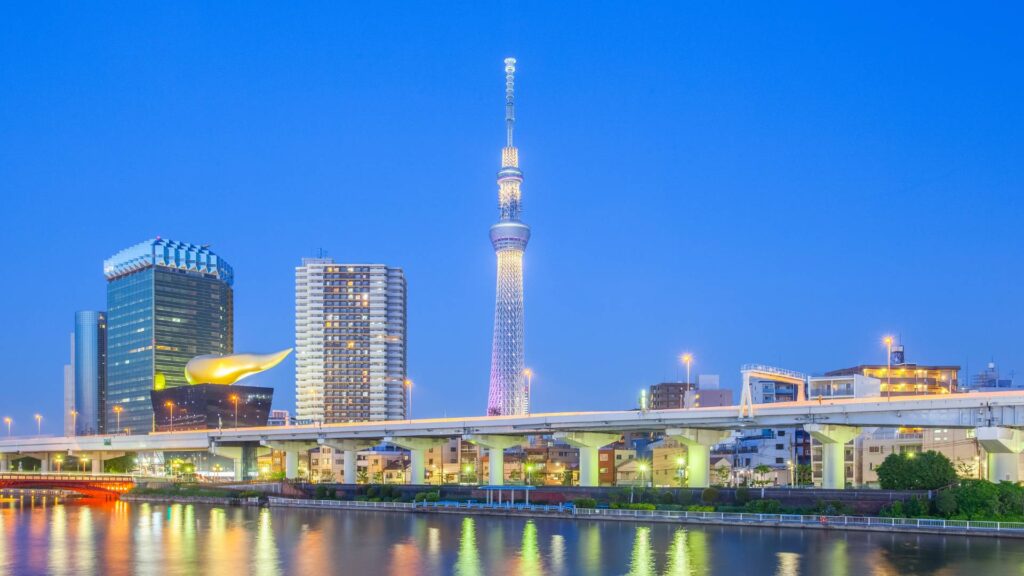
The Sky Tree, one of the world’s tallest radio towers, rises where a former freight station once stood, adjacent to the former Tobu Railway headquarters.
Higashimukojima 東向島
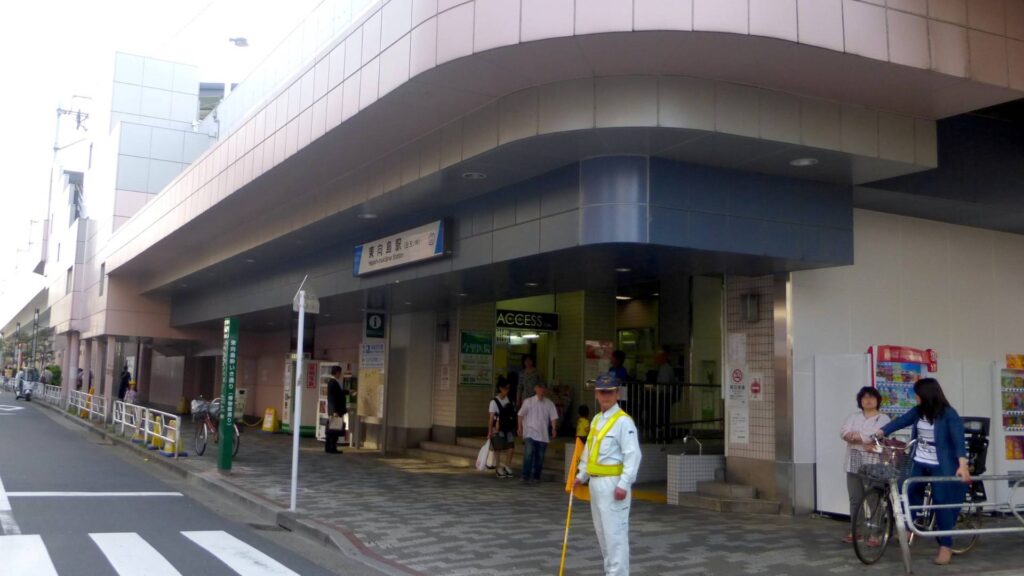
The former station name “Tamanoi” belonged to a red-light district, prompting a change to its current name due to its negative connotations. It’s renowned for Mukojima-Hyakkaen Gardens and the Tobu Museum, a haven for railway enthusiasts. The old cafes that once lined Tamanoi on the red line have vanished, diminishing the area’s charm.
Kanegafuchi 鐘ヶ淵

Located at the northernmost tip of Sumida Ward, Kanegafuchi is where Kanebo, a Japanese spinning company, was established. The station area retains its old downtown vibe, having escaped war damage. Factories and wooden apartments dot the landscape, with the Shirahige Disaster Prevention Complex, resembling the Great Wall, standing tall along the Sumida River, ready to thwart fire risks.
Along the Tobu Kameido Line
Komurai 小村井

The closest stop to the Kao Tokyo Plant, famed for soap, detergent, and chemical manufacturing, lies in Sumida Ward along the Tobu Kameido Line. The Kirakira Tachibana shopping district is a short stroll away. True to its name, Komurai offers omelette rice at a Western-style restaurant near the station.
Higashi Azuma 東あずま
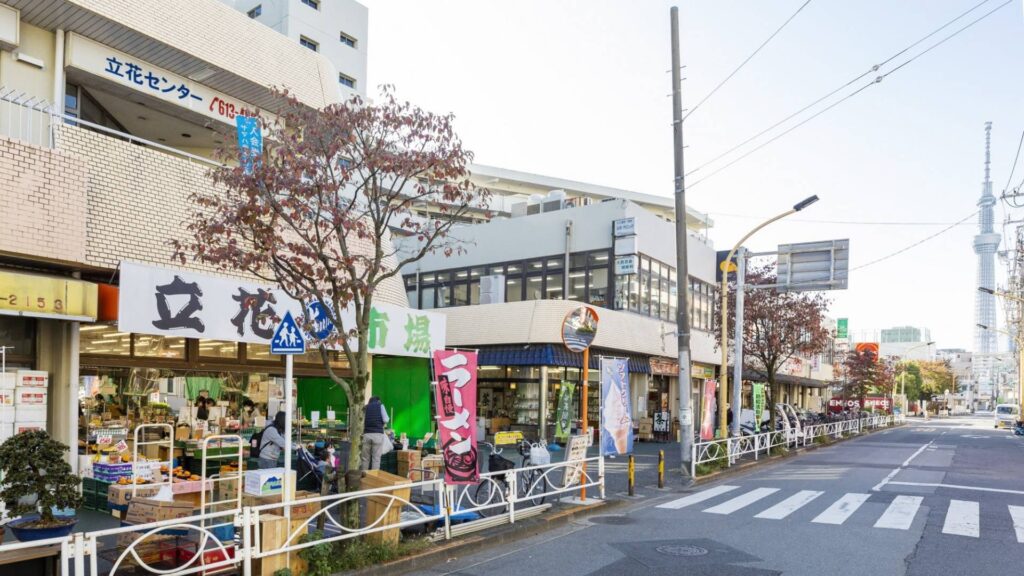
Situated east of the former Azuma Town, this station area inspired a local hip-hop group’s tune titled “Danchi Song,” sung by DOPE, promoting the downtown essence on the outskirts of Sumida Ward.
What to Do in Sumida Ward
Tokyo Skytree 東京スカイツリー
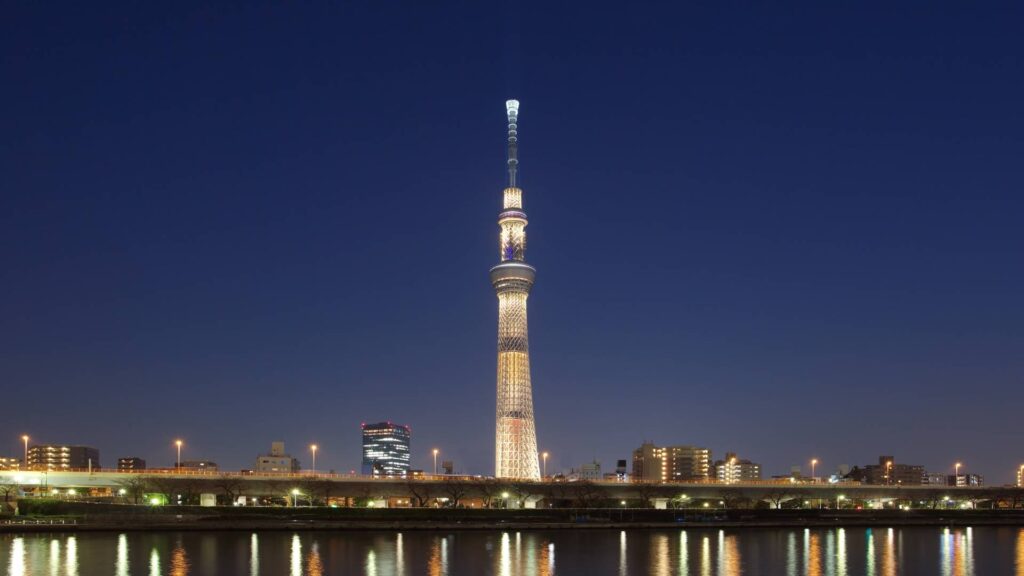
Situated in Oshiage, Sumida-ku, Tokyo, this 634-meter-high radio tower boasts an observation deck. Unveiled in 2012, it stands as Tokyo’s new emblem. With two observation decks – the TEMBO DECK at 350 metres above ground and the TEMBO Kairo – visitors can stroll amidst Tokyo’s day and night vistas through the tube-shaped glass walls. At the tower’s base lies “Tokyo Skytree Town”, home to restaurants, shopping malls, and other amenities.
Find out more about Tokyo Skytree here on Google maps.
Sumida Aquarium すみだ水族館
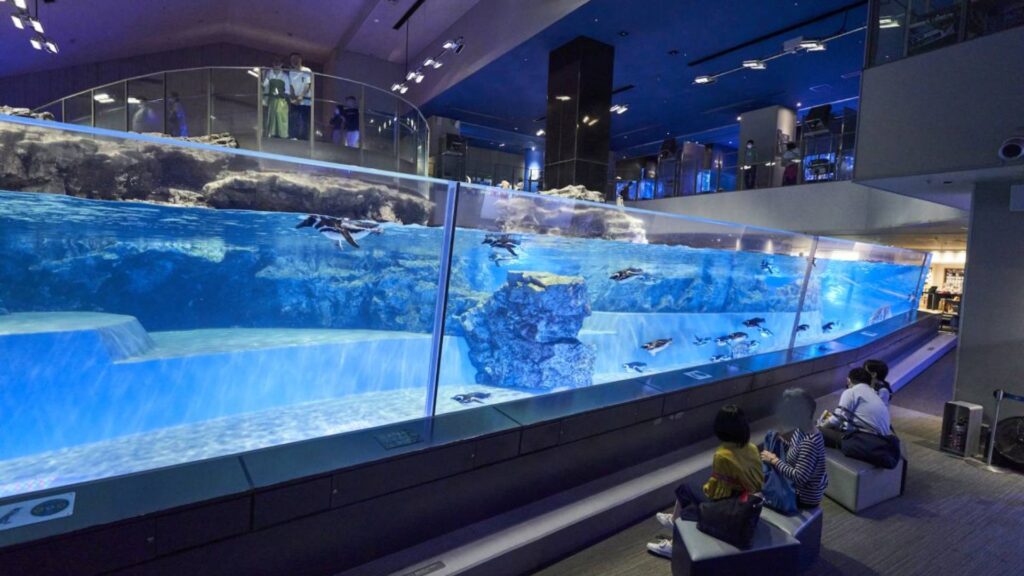
Sumida Aquarium resides on the 5th and 6th floors of Tokyo Solamachi within Tokyo Skytree Town. This aquarium is turning heads with its unconventional displays, including Tokyo Large Aquarium, replicating the waters of World Natural Heritage site, Ogasawara Islands; Edo-Lium, showcasing goldfish in a fantastical Japanese-themed space; and Aqualabo, where visitors can witness jellyfish breeding research.
The penguin exhibit, featuring penguins freely swimming in Japan’s largest indoor pool tank, is a crowd pleaser.
Find out more about Sumida Aquarium here on Google maps.
Tokyo Solamachi 東京ソラマチ

Nestled in Tokyo Skytree Town, a bustling hub with over 300 stores and diverse amenities, including a shopping district, food market, restaurants, aquarium, and planetarium, Solamachi Dining Sky Tree View on the 30th and 31st floors offers restaurants with stunning vistas, ideal for anniversaries and dates. Families can also enjoy the Pokemon Center and Tomica Shop.
Find out more about Tokyo Solamachi here on Google maps.
Ryogoku Kokugikan National Sumo Stadium 国技館
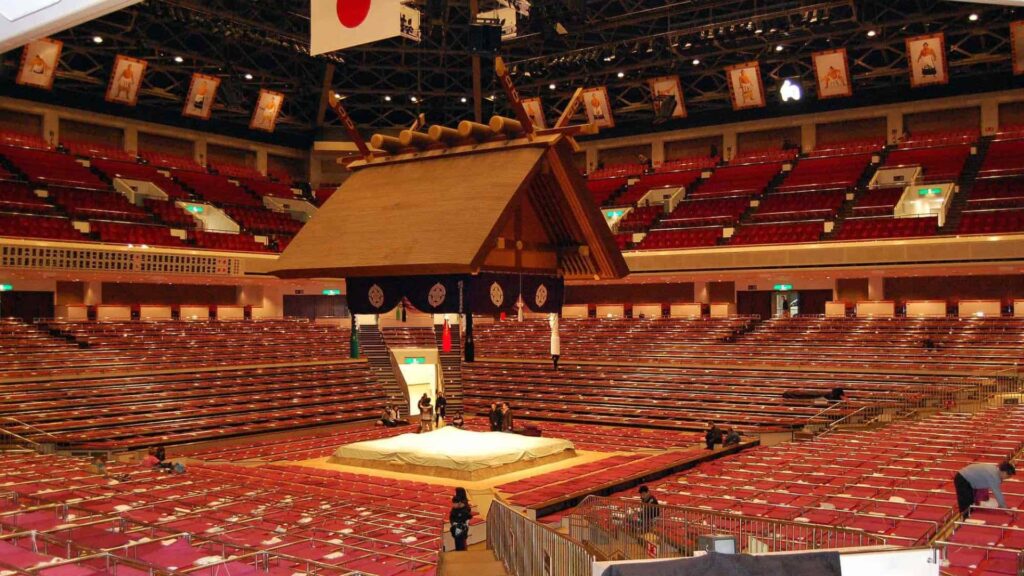
Ryogoku Kokugikan, or Ryogoku Sumo Hall, is renowned for sumo tournaments, accommodating over 10,000 spectators and hosting various events like professional wrestling, boxing, and concerts. The on-site store offers original sumo-themed treats, even outside of tournament seasons.
Adjacent to the main hall, Sumo Museum showcases woodblock prints, ceremonial ropes, and photographs of past sumo grand champions.
Find out more about Ryogoku Kokugikan National Sumo Stadium here on Google maps.
Tobu Museum 東武博物館

Tobu Museum, established in 1989 to commemorate Tobu Railroad’s 90th anniversary, offers insights into Tobu Railroad through actual rolling stock displays, including steam locomotives, and interactive exhibits such as simulators. Visitors can also observe Tobu Skytree Line trains passing above the museum.
Find out more about Tobu Museum here on Google maps.
Mukojima-Hyakkaen Gardens 向島百花園
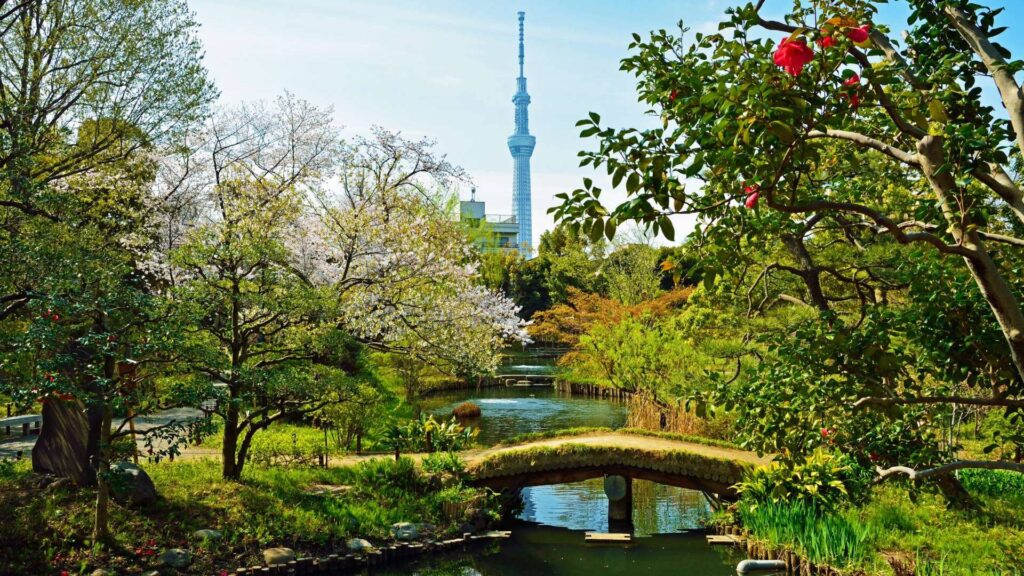
Originally a private garden constructed during the Bunka-Bunsei period (early 19th century) of the Edo era, this park was donated to the City of Tokyo in the early Showa period. With around 230 plant species, including its signature plum trees, the park blooms with various flowers across all seasons, earning it recognition as a national scenic spot.
Find out more about Mukojima-Hyakkaen Gardens here on Google maps.
Tobacco & Salt Museum たばこと塩の博物館

Tobacco & Salt Museum curates materials related to the history and culture of tobacco and salt, formerly monopolized commodities. Visitors can explore tobacco’s global journey from the Americas and delve into Edo-period tobacco culture on the third floor, while the second floor offers insights into salt’s history and knowledge through exhibits and quizzes. The museum hosts special exhibitions several times a year, covering diverse themes beyond tobacco and salt.
Find out more about Tobacco & Salt Museum here on Google maps.
Postal Museum Japan 郵政博物館

Postal Museum Japan, located on Solamachi’s 9th floor, delves into postal services under the theme “connect with your heart, connect with the world”. With approximately 400 items, including 330,000 stamp types, it boasts Japan’s largest collection.
Zones include a permanent exhibition detailing postal service history in seven sections, alongside numerous hands-on, experiential features. Visitors can commemorate their visit by mailing a letter in the Skytree-shaped mailbox, stamped with the date and a Skytree view.
Find out more about Postal Museum Japan here on Google maps.
Ushijima Shrine 牛嶋神社

Ushijima Shrine, nestled in Sumida Park, was established in 860 (Jougan 2), venerating Susano-no-mikoto. The shrine grounds feature “Nadegyu”, believed to cure ailments by touching the afflicted part of the body. The annual September festival concludes with a joint parade of portable shrines by shrine parishioners from each town.
Find out more about Ushijima Shrine here on Google maps.
Edo-Tokyo Museum 江戸東京博物館
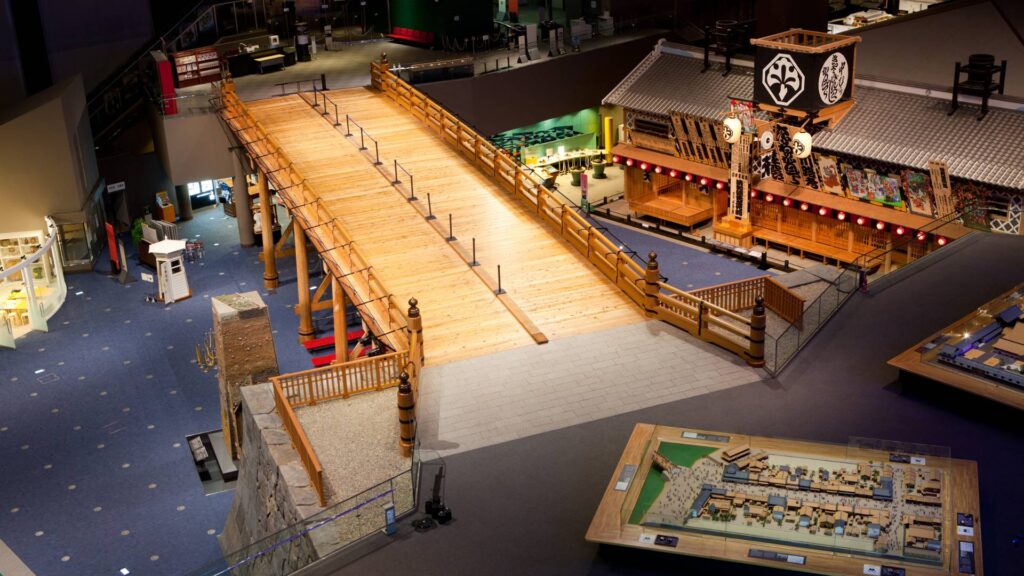
The museum, near Ryogoku Kokugikan, showcases life-size reconstructions of Nihonbashi Bridge, built during the Kan’ei period (1615-1644). It replicates Edo’s cityscape, including Kan’ei Period merchant quarters, daimyo residences, and Edo Castle Palace. Foreign tourists frequent the facility to immerse themselves in Edo Tokyo’s culture and lifestyle.
Find out more about Edo-Tokyo Museum here on Google maps.
Mimeguri-jinja Shrine 三圍神社

Mukojima Inari Shrine, located in Mukojima, Sumida-ku, Tokyo, enshrines Uganomitama no Mikoto, Fushimi Inari Taisha’s chief deity in Kyoto. Since the Edo period (1603-1868), it’s been revered as the guardian shrine of the Mitsui family and Mitsui Group. Stone statues and monuments dedicated by the Mitsui family, including a white fox statue inscribed “Mukoten”, adorn the shrine grounds.
Find out more about Mimeguri-jinja Shrine here on Google maps.
Nippon Origami 東京おりがみミュージアム

Tokyo Origami Museum, an origami exhibition venue in Honjo, Sumida-ku, Tokyo, features permanent displays of origami works, offers origami classes, and boasts an origami-related book collection. Visitors can purchase magazines and books from the Japan Origami Association, as well as origami paper.
Find out more about Nippon Origami here on Google maps.
Mukojimabshi Ginza Shopping Street 向島橘銀座商店街協同組合

A community-driven morning market, running for 38 years, hosts about 20 stalls offering a diverse range of goods at bargain prices from around 6:00 a.m. Known for its downtown vibe, the market was named one of the “30 Best Shopping Streets” in 2013. Held monthly on the 20th, with the “Bikkuri Market” occurring every two months, it offers numerous events for locals and visitors alike.
Find out more about Mukojimabshi Ginza Shopping Street here on Google maps.
Accommodations in Sumida Ward
Smi:re Stay Oshiage (3 stars)
Nestled in Tokyo’s Sumida Ward district, Smi:re Stay Oshiage sits perfectly within reach of local attractions. You’ll find it just 600 meters from Tobacco & Salt Museum, 700 meters from Kamejimashogakko Memorial Park, and a stone’s throw away from Tokyo Skytree. Nearby gems include Kameido Tenjin Shrine, Olinas Kinshicho Shopping Mall, and Tsukada Kobo.
Playsis East Tokyo (3 stars)
In Tokyo’s vibrant scene, PLAYSIS East Tokyo stands out, offering comfy rooms and a shared lounge. You’ll be just 70 meters from Sumida Riverside Hall, with attractions like Chiisana Garasu No Honno Museum and Ushijima Shrine nearby. Conveniently, Tokyo Haneda International Airport is a short 31 kilometers away.
The Gate Hotel Ryogoku by Hulic (4 stars)
Looking for a riverside retreat? The Gate Hotel Ryogoku by Hulic is your spot. Set in Tokyo, mere steps from Kyu Yasuda Garden, it offers a bar, terrace, and stunning river views. Within reach are the Sumo Museum, Ryogoku Kokugikan National Sumo Stadium, and Japanese Sword Museum. Tokyo Haneda International Airport is a convenient 16 kilometers away.
Petit Grande Miyabi (3 stars)
Experience Tokyo’s charm at Petit Grande Miyabi, just 200 meters from Yokoamicho Park. Enjoy the comfort of air-conditioned rooms and free WiFi. Don’t miss nearby attractions like Tokyo Metropolitan Memorial Hall and NTT Docomo History Square. Tokyo Haneda International Airport is about 30 kilometers away.
Sola Hotel (3 stars)
SOLA HOTEL in Tokyo offers a comfortable stay near local attractions. With free WiFi and shared facilities like a lounge and terrace, it’s perfect for explorers. Enjoy proximity to Kamejimashogakko Memorial Park, Kameido Tenjin Shrine, and Olinas Kinshicho Shopping Mall.
Dai-ichi Hotel Ryogoku (4 stars)
Planning a sumo-packed trip? Dai-ichi Hotel Ryogoku is your ticket. Just a 5-minute walk from Ryogoku Kokugikan National Sumo Stadium, it even offers a free shuttle to/from Tokyo Disney Resort. Plus, you’re connected to Ryogoku Subway Station for easy access to Roppongi. Enjoy views of Tokyo Skytree tower from most rooms. With a prime location, it’s your gateway to the best of Tokyo.
Keisei Richmond Hotel Tokyo Oshiage (3 stars)
Discover Tokyo’s delights at Keisei Richmond Hotel Tokyo Oshiage. Just moments from Tobacco & Salt Museum and Tsukada Kobo, it’s a hotspot for culture enthusiasts. Unwind at Mimeguri Shrine or explore Hatonomachidori Shopping Street and Kofukuji Temple. And don’t miss Tokyo Skytree, a must-visit nearby attraction.
Exploring Sumida Ward: A Final Thought
What are your thoughts on Sumida Ward in Tokyo? Do you enjoy delving into the history and culture of this fascinating part of the city? With its rich history and array of unique attractions, Sumida offers a local experience like no other in Tokyo. If you’re considering a visit, be sure to bookmark this blog for future reference.



